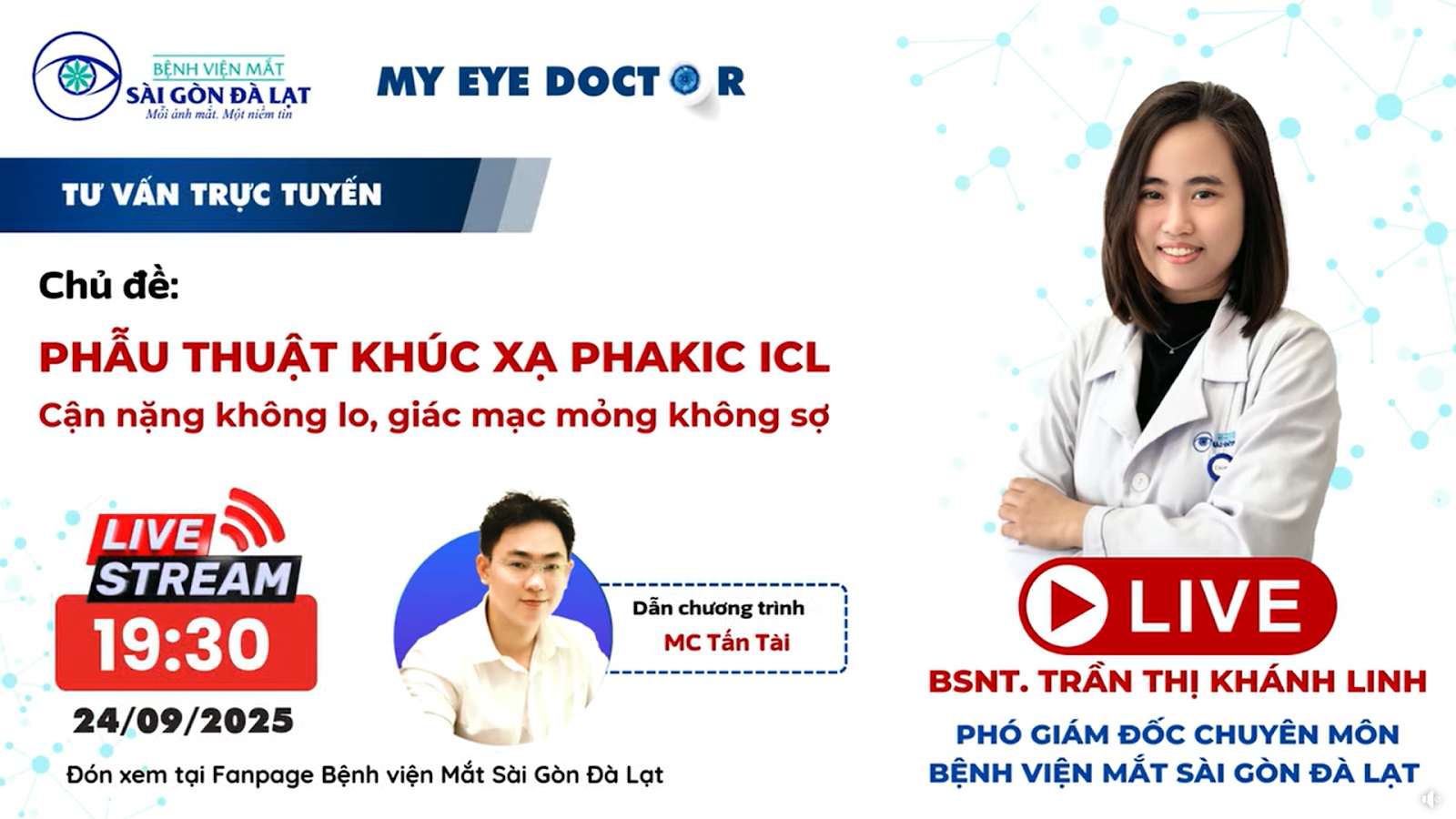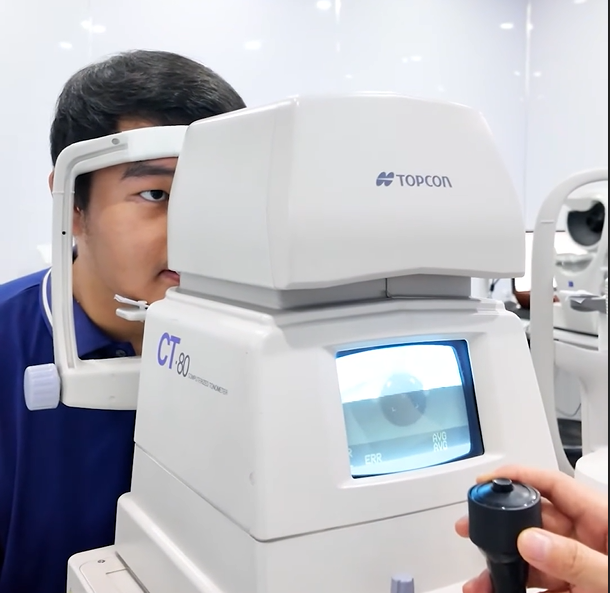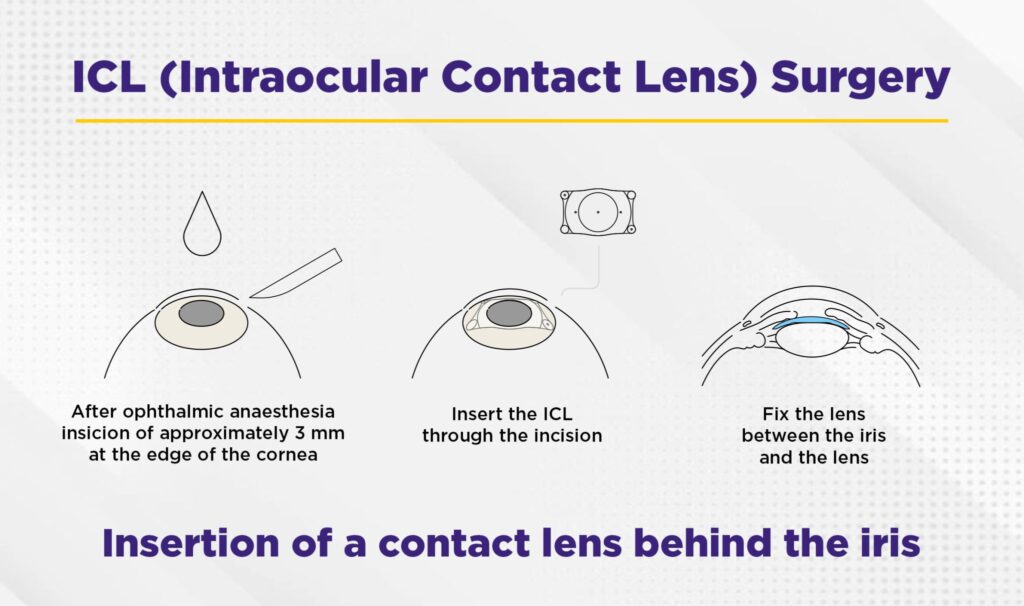Introduction to the Online Eye-Health Consultation Program “MY EYE DOCTOR”

Online eye-health consultation on the topic of Phakic ICL Refractive Surgery
The demand to improve vision and break free from glasses is rising, especially among people with high myopia or thin corneas — groups often unsuitable for traditional laser procedures. To offer an optimal solution, the Saigon Dalat Eye Hospital is hosting the online consultation program “MY EYE DOCTOR” with the topic:
“Phakic ICL Refractive Surgery – No worries with high myopia, no fear with thin corneas.”
Speaker: Resident Physician Tran Thi Khanh Linh – Deputy Medical Director, delivering in-depth insights into Phakic ICL — a cutting-edge technology for refractive error treatment.
Livestream: 7:30 PM, September 24, 2025 (Wednesday evening) – Live Q&A with the doctor and gifts worth up to 500,000 VND throughout the program.
What is Phakic ICL?
Phakic ICL (Implantable Collamer Lens) is a biocompatible lens placed inside the eye, positioned between the iris and the natural crystalline lens. Unlike cornea-reshaping procedures, Phakic ICL does not cause corneal injury, thereby preserving corneal surface structure and tear-film quality.
The ICL is made of Collamer® — a collagen-polymer material with high biocompatibility that helps filter UV light and provides natural, crisp vision.
Who is a good candidate for Phakic ICL?

Phakic ICL biolens inside the eye
- Myopia from –3.0D to –20.0D; may include astigmatism around 1.0D–4.0D (per clinical evaluation).
- 21–45 years old with stable refraction for ≥ 1 year.
- Thin corneas, or a risk/history of dry eye after corneal refractive surgery.
- Anterior chamber depth of approximately ≥ 3.0 mm, with age-appropriate endothelial cell density.
- No progressive ocular diseases (glaucoma, endophthalmitis, advanced cataract) or systemic contraindications.
Final eligibility depends on comprehensive refraction, ocular biometry, specular microscopy, and clinical assessment at a specialized eye-care center.
Key benefits of Phakic ICL
- Clear, natural vision: Many patients achieve unaided visual acuity comparable to or better than their pre-operative best-corrected vision.
- Rapid recovery: The procedure typically takes 20–30 minutes; vision often improves within the first 24–48 hours.
- Minimal dry-eye impact: Because the corneal surface is not altered, tear-film disturbance is limited.
- Can be taken out if needed: If refraction changes or a different technology is considered, the lens can be taken out by the surgeon.
- UV protection: Collamer helps filter ultraviolet light, contributing to intraocular protection.
- Night-vision quality: Reported good visual quality in low-light conditions when properly indicated and aligned.
Phakic ICL vs. LASIK/PRK
| Criterion | Phakic ICL | LASIK/PRK |
|---|---|---|
| Effect on cornea | Does not cause corneal injury | Directly modifies the corneal surface |
| Dry-eye risk | Low | Higher due to corneal nerve alteration |
| Suitable for thin corneas | Yes | Often not |
| Ability to adjust/switch | Can be taken out if needed | Irreversible removal of corneal tissue |
| Visual recovery time | Fast (typically 1–2 days) | About 1–2 weeks depending on response |
For patients with high myopia or thin corneas, Phakic ICL is often optimal because it preserves corneal structure and tear-film quality.
Phakic ICL surgical process

Phakic ICL surgical workflow at Saigon Dalat Eye Hospital
- Comprehensive evaluation: Refraction, corneal topography, anterior chamber depth, endothelial cell count, ocular sizing.
- Preparation: Topical anesthesia with eye drops, pupillary dilation.
- Lens placement: A small corneal incision is made to insert the lens behind the iris; axis alignment is performed for astigmatism.
- Completion & monitoring: No sutures needed; intraocular pressure and lens position are checked post-procedure.
Most patients can go home the same day, resume light activities, and return for scheduled follow-ups.
Post-operative care notes
- Use prescribed anti-inflammatory/antibiotic drops; do not stop them on your own.
- Avoid rubbing your eyes for 1–2 weeks; wear protective glasses outdoors.
- Attend all follow-ups to monitor intraocular pressure, corneal endothelium, and lens position.
- Limit strenuous activities and keep unclean water out of the eyes for the first few days.
Online consultation at Saigon Dalat Eye Hospital
The “MY EYE DOCTOR” livestream hosted by the Saigon Dalat Eye Hospital not only delivers in-depth knowledge about Phakic ICL but also lets you interact directly with Resident Physician Tran Thi Khanh Linh. Participants have a chance to receive gifts worth up to 500,000 VND during the program.
Conclusion
Phakic ICL is an excellent option for patients with high myopia and thin corneas thanks to its non-injurious approach to the cornea, fast recovery, natural visual quality, and the possibility to be taken out when needed. If you’re interested, join the livestream for detailed answers and arrange an in-person evaluation at the Saigon Dalat Eye Hospital.

 vi
vi 22-Sep-2025
22-Sep-2025
.svg) Hotline
Hotline Appointment
Appointment https://matsaigondalat.com/
https://matsaigondalat.com/ 64 Bui Thi Xuan Street, Ward 2, Da Lat, Lam Dong
64 Bui Thi Xuan Street, Ward 2, Da Lat, Lam Dong Opening Hours
Opening Hours






